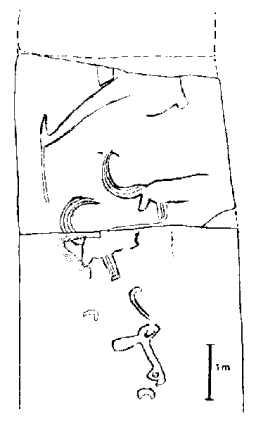 |
Science Frontiers ONLINE No. 40: Jul-Aug 1985 |
|
|
Megalithic Recycling
During restoration work on a capstone at the tomb of Gavrinis, located on an island just off the Brittany coast, C.-T. Le Roux discovered carvings that had long been concealed. The carvings and the rock itself fit perfectly with the capstone of the Table des Marchands, another famous megalithic monument some 4 kilometers away. Stimulated by this discovery, a third capstone on another monument nearby was found to fit like a jigsaw puzzle piece. The combined result is a huge stela 14 meters high, 3.7 meters wide, and 0.8 meter thick. The total stela would weight about 100 tons. It is decorated on one side with animals (bovids) and other devices. Apparently, this stela once stood near the even larger stela called Grand Menhir Brise or 'er-Grah.' The Grand Menhir Brise is also broken into pieces. Evidently, the period of megalithic tomb building, which probably began about 5,200 BP was preceded by a period when giant, decorated stelae were erected. These stelae were later pulled down and broken up for use in constructing tombs. The civilization that raised the stelae is not well-understood; and one wonders why such impressive monuments were torn down and their engravings concealed. Incidentally, the stela chunk found at Gavrinis weighs about 20 tons and was transported over 4 kilometers across several watercourses.
(Bahn, Paul G.; "Megalithic Recycling in Brittany," Nature, 314:671, 1985.)
 | Reconstruction of a decorated stela from capstones on megalithic tombs in Brittany. |